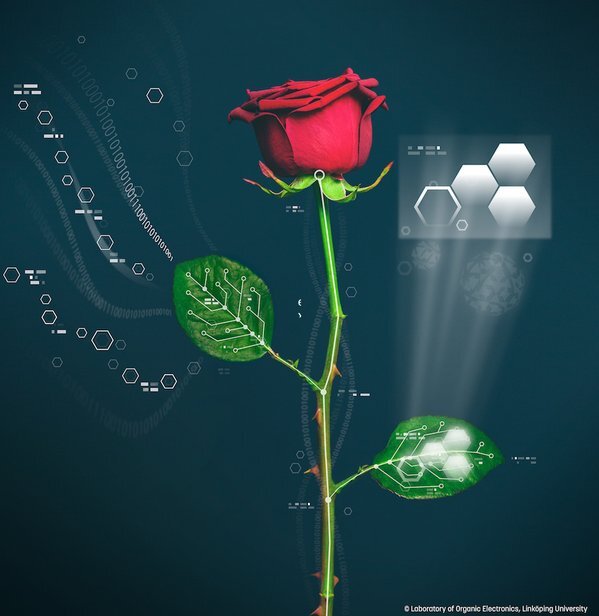In what seems like the most unlikely of unions, a team of scientists at the Linköping University Laboratory for Organic Electronics are working to combine flowers, bushes, and trees with electronics to produce a breed of botanical cyborgs. Led by Professor Magnus Berggren, the researchers have used semiconductive polymers to create the key components of analog and digital electronic circuits inside a rose plant.
For decades, scientists have been using electronic devices to study plants, but this has usually involved hooking up machines to the plants with less than satisfactory results. What the Linköping researchers are aiming at is merging plants and electronics. This may sound like something that Dr Frankenstein might do on his day off, but there is logic behind it.
According to the researchers, conventional electronics are used to send and process electronic signals, but plants have an analogous system to transport and process chemical ions and growth hormones. The point where both meet is in the area of semi-conductive polymers.
These not only use electrons to carry signals, but ions as well. What the team reasoned was that if these polymers could be introduced into a plant, they could combine electronic signals with the plant's ion signals and convert the plants signals into electronics.
In two years of research, the team found that by introducing a water-soluble polymer called PEDOT-S into a rose, it formed a hydrogel in a thin film along the channel that allows the rose to absorb water and nutrients. They were also able to induce the plant to produce polymer membranes with an electrode at each end and a gate in the middle – in other words, a functioning organic transistor.

In addition, the team used vacuum infiltration to introduce a PEDOT variant and nanocellulose fibers into the rose's foliage to create sponge-like cavities that were filled with a conductive polymer. These cells are essentially pixels separated by the veins in the leaves that have a color-changing electrochromatic function similar to a printed character display.
The team says that the process is inexpensive and holds the promise of combining the functions of electronics with the resistance to cold and wet of plants. By using the polymers, it may be possible to read and regulate the plant's growth and other functions by controlling the concentrations of various substances. In addition, it could have more exotic applications, such as transferring energy collected by photosynthesis into a fuel cell or converting plants into living antennae.
"Now we can really start talking about power plants," says Berggren. "We can place sensors in plants and use the energy formed in the chlorophyll, produce green antennae or produce new materials. Everything occurs naturally, and we use the plant's own very advanced, unique systems."
The team's results have been published in Science Advances.
Source: Linköping University






